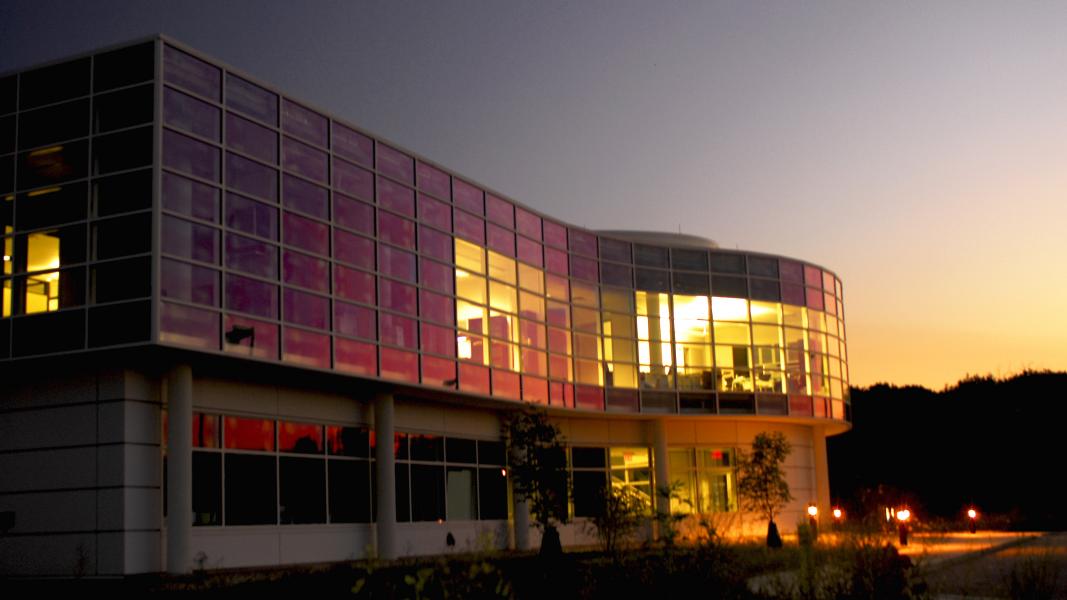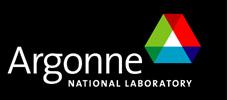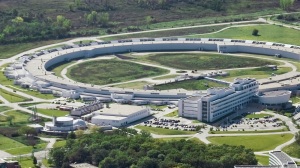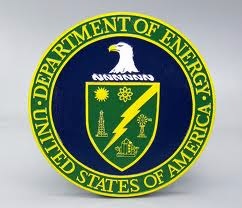At
6.18.24
ANDRE SALLES
After a year of installation and commissioning, the new electron storage ring at the heart of the Advanced Photon Source — powered by a world’s first injection technique — is ready for business.
A new era of science at the Advanced Photon Source (APS) is ready to begin. On June 17, 2024, the facility at the U.S. Department of Energy’s (DOE) Argonne National Laboratory delivered its first X-ray light beams to a scientific beamline as part of a comprehensive and complex upgrade.
The APS, a DOE Office of Science user facility, has been a leading destination for X-ray science for nearly 30 years. Scientists from around the world use its ultrabright X-ray beams to learn more about our universe and lay the groundwork for longer-lasting batteries, more efficient solar cells and tougher materials for roads and bridges, to name a few. For the past year, operations have been paused at the facility while the original storage ring, which generates the X-ray beams, was removed and a brand-new ring installed.
After more than a month of commissioning the new storage ring, the APS team has begun the process of bringing each of the 71 experiment stations, called beamlines, around the ring into operation. The first scientific beamline to receive X-rays was 27-ID, home of the resonant inelastic X-ray scattering program at the APS. Scientists will be able to use 27-ID to study complex materials that may be used to power the devices of the future.
“Just like the original APS revolutionized hard synchrotron X-ray science in the United States and the world, the upgraded APS promises to do the same for the next several decades,” said Laurent Chapon, associate laboratory director for photon sciences at Argonne and director of the APS. “It has taken our remarkable team more than a decade of work to get to this moment, and we look forward to the extraordinary scientific discoveries that will be made at this renewed facility.”
The new storage ring will also pioneer the use of multi-bunch swap-out injection, a method of periodically replenishing electrons in the beam as it circulates. The APS is the first modern synchrotron X-ray light source in the world to make use of it. Argonne’s accelerator team successfully rolled out the technique on the new machine recently.
The X-ray beams generated by the upgraded APS will be up to 500 times brighter than those of the original facility, and hundreds of billions of times brighter than the X-ray beams in your dentist’s office. Using these beams, scientists will be able to peer inside thick materials to see what they are made of and how they behave, at spatial and time-scale resolutions previously impossible with X-rays.

Image by Argonne National Laboratory.
“The upgraded APS storage ring is performing exactly as we had hoped it would,” said Jim Kerby, director of the APS Upgrade Project. “What we’re seeing now is the result of hundreds of people doing excellent and safe work consistently for years. I simply cannot say enough about the Upgrade team who designed, built and installed this new machine with incredible precision in all aspects. It is an amazing achievement, and the relatively quick commissioning of the new machine is a testament to the skills everyone brought to the table. Achieving first light with this new machine is a proud moment for everyone here at Argonne.”
Over the course of the next year, all of the APS beamlines will return to operations, and scientists from around the globe will begin to conduct research on the upgraded APS later in 2024.
“I’m excited to see what the international science community will do with the increased capabilities of the upgraded APS,” said Paul Kearns, Argonne laboratory director. “With more powerful X-ray beams and greatly enhanced beamlines, we’ll strengthen U.S. leadership in photon sciences. And by combining its cutting-edge technology with our new Aurora supercomputer [below], we’ll enable scientists to make pivotal discoveries at unprecedented speeds.”
First Light at the Upgraded Advanced Photon Source. Video by Argonne National Laboratory
See the full article here .
Comments are invited and will be appreciated, especially if the reader finds any errors which I can correct.
five-ways-keep-your-child-safe-school-shootings
Please help promote STEM in your local schools.
The Advanced Photon Source at Argonne National Laboratory is one of five national synchrotron radiation light sources supported by the U.S. Department of Energy’s Office of Science to carry out applied and basic research to understand, predict, and ultimately control matter and energy at the electronic, atomic, and molecular levels, provide the foundations for new energy technologies, and support DOE missions in energy, environment, and national security.
The DOE’s Argonne National Laboratory seeks solutions to pressing national problems in science and technology. The nation’s first national laboratory, Argonne conducts leading-edge basic and applied scientific research in virtually every scientific discipline. Argonne researchers work closely with researchers from hundreds of companies, universities, and federal, state and municipal agencies to help them solve their is a science and engineering research national laboratory operated by UChicago Argonne LLC for the United States Department of Energy. The facility is located in Lemont, Illinois, outside of Chicago, and is the largest national laboratory by size and scope in the Midwest.
Argonne had its beginnings in the Metallurgical Laboratory of the University of Chicago, formed in part to carry out Enrico Fermi’s work on nuclear reactors for the Manhattan Project during World War II. After the war, it was designated as the first national laboratory in the United States on July 1, 1946. In the post-war era the lab focused primarily on non-weapon related nuclear physics, designing and building the first power-producing nuclear reactors, helping design the reactors used by the United States’ nuclear navy, and a wide variety of similar projects. In 1994, the lab’s nuclear mission ended, and today it maintains a broad portfolio in basic science research, energy storage and renewable energy, environmental sustainability, supercomputing, and national security.
UChicago Argonne, LLC, the operator of the laboratory, “brings together the expertise of the University of Chicago (the sole member of the LLC) with Jacobs Engineering Group Inc.” Argonne is a part of the expanding Illinois Technology and Research Corridor. Argonne formerly ran a smaller facility called Argonne National Laboratory-West (or simply Argonne-West) in Idaho next to the Idaho National Engineering and Environmental Laboratory. In 2005, the two Idaho-based laboratories merged to become the DOE’s Idaho National Laboratory.
What would become Argonne began in 1942 as the Metallurgical Laboratory at the University of Chicago, which had become part of the Manhattan Project. The Met Lab built Chicago Pile-1, the world’s first nuclear reactor, under the stands of the University of Chicago sports stadium. Considered unsafe, in 1943, CP-1 was reconstructed as CP-2, in what is today known as Red Gate Woods but was then the Argonne Forest of the Cook County Forest Preserve District near Palos Hills. The lab was named after the surrounding forest, which in turn was named after the Forest of Argonne in France where U.S. troops fought in World War I. Fermi’s pile was originally going to be constructed in the Argonne Forest, and construction plans were set in motion, but a labor dispute brought the project to a halt. Since speed was paramount, the project was moved to the squash court under Stagg Field, the football stadium on the campus of the University of Chicago. Fermi told them that he was sure of his calculations, which said that it would not lead to a runaway reaction, which would have contaminated the city.
Other activities were added to Argonne over the next five years. On July 1, 1946, the “Metallurgical Laboratory” was formally re-chartered as Argonne National Laboratory for “cooperative research in nucleonics.” At the request of the U.S. Atomic Energy Commission, it began developing nuclear reactors for the nation’s peaceful nuclear energy program. In the late 1940s and early 1950s, the laboratory moved to a larger location in unincorporated DuPage County, Illinois and established a remote location in Idaho, called “Argonne-West,” to conduct further nuclear research.
In quick succession, the laboratory designed and built Chicago Pile 3 (1944), the world’s first heavy-water moderated reactor, and the Experimental Breeder Reactor I (Chicago Pile 4), built-in Idaho, which lit a string of four light bulbs with the world’s first nuclear-generated electricity in 1951. A complete list of the reactors designed and, in most cases, built and operated by Argonne can be viewed in the, Reactors Designed by Argonne page. The knowledge gained from the Argonne experiments conducted with these reactors 1) formed the foundation for the designs of most of the commercial reactors currently used throughout the world for electric power generation and 2) inform the current evolving designs of liquid-metal reactors for future commercial power stations.
Conducting classified research, the laboratory was heavily secured; all employees and visitors needed badges to pass a checkpoint, many of the buildings were classified, and the laboratory itself was fenced and guarded. Such alluring secrecy drew visitors both authorized—including King Leopold III of Belgium and Queen Frederica of Greece—and unauthorized. Shortly past 1 a.m. on February 6, 1951, Argonne guards discovered reporter Paul Harvey near the 10-foot (3.0 m) perimeter fence, his coat tangled in the barbed wire. Searching his car, guards found a previously prepared four-page broadcast detailing the saga of his unauthorized entrance into a classified “hot zone”. He was brought before a federal grand jury on charges of conspiracy to obtain information on national security and transmit it to the public, but was not indicted.
Not all nuclear technology went into developing reactors, however. While designing a scanner for reactor fuel elements in 1957, Argonne physicist William Nelson Beck put his own arm inside the scanner and obtained one of the first ultrasound images of the human body. Remote manipulators designed to handle radioactive materials laid the groundwork for more complex machines used to clean up contaminated areas, sealed laboratories or caves. In 1964, the “Janus” reactor opened to study the effects of neutron radiation on biological life, providing research for guidelines on safe exposure levels for workers at power plants, laboratories and hospitals. Scientists at Argonne pioneered a technique to analyze the moon’s surface using alpha radiation, which launched aboard the Surveyor 5 in 1967 and later analyzed lunar samples from the Apollo 11 mission.
In addition to nuclear work, the laboratory maintained a strong presence in the basic research of physics and chemistry. In 1955, Argonne chemists co-discovered the elements einsteinium and fermium, elements 99 and 100 in the periodic table. In 1962, laboratory chemists produced the first compound of the inert noble gas xenon, opening up a new field of chemical bonding research. In 1963, they discovered the hydrated electron.
High-energy physics made a leap forward when Argonne was chosen as the site of the 12.5 GeV Zero Gradient Synchrotron, a proton accelerator that opened in 1963. A bubble chamber allowed scientists to track the motions of subatomic particles as they zipped through the chamber; in 1970, they observed the neutrino in a hydrogen bubble chamber for the first time.
Meanwhile, the laboratory was also helping to design the reactor for the world’s first nuclear-powered submarine, the U.S.S. Nautilus, which steamed for more than 513,550 nautical miles (951,090 km). The next nuclear reactor model was Experimental Boiling Water Reactor, the forerunner of many modern nuclear plants, and Experimental Breeder Reactor II (EBR-II), which was sodium-cooled, and included a fuel recycling facility. EBR-II was later modified to test other reactor designs, including a fast-neutron reactor and, in 1982, the Integral Fast Reactor concept—a revolutionary design that reprocessed its own fuel, reduced its atomic waste and withstood safety tests of the same failures that triggered the Chernobyl and Three Mile Island disasters. In 1994, however, the U.S. Congress terminated funding for the bulk of Argonne’s nuclear programs.
Argonne moved to specialize in other areas, while capitalizing on its experience in physics, chemical sciences and metallurgy. In 1987, the laboratory was the first to successfully demonstrate a pioneering technique called plasma wakefield acceleration, which accelerates particles in much shorter distances than conventional accelerators. It also cultivated a strong battery research program.
Following a major push by then-director Alan Schriesheim, the laboratory was chosen as the site of the Advanced Photon Source, a major X-ray facility which was completed in 1995 and produced the brightest X-rays in the world at the time of its construction.
On 19 March 2019, it was reported in the Chicago Tribune that the laboratory was constructing the world’s most powerful supercomputer. Costing $500 million it will have the processing power of 1 quintillion flops. Applications will include the analysis of stars and improvements in the power grid.
With employees from more than 60 nations, Argonne is managed by UChicago Argonne, LLC for the U.S. Department of Energy’s Office of Science. For more visit www.anl.gov.

About the Advanced Photon Source

The U. S. Department of Energy Office of Science’s Advanced Photon Source (APS) at Argonne National Laboratory is one of the world’s most productive X-ray light source facilities. The APS provides high-brightness X-ray beams to a diverse community of researchers in materials science, chemistry, condensed matter physics, the life and environmental sciences, and applied research. These X-rays are ideally suited for explorations of materials and biological structures; elemental distribution; chemical, magnetic, electronic states; and a wide range of technologically important engineering systems from batteries to fuel injector sprays, all of which are the foundations of our nation’s economic, technological, and physical well-being. Each year, more than 5,000 researchers use the APS to produce over 2,000 publications detailing impactful discoveries, and solve more vital biological protein structures than users of any other X-ray light source research facility. APS scientists and engineers innovate technology that is at the heart of advancing accelerator and light-source operations. This includes the insertion devices that produce extreme-brightness X-rays prized by researchers, lenses that focus the X-rays down to a few nanometers, instrumentation that maximizes the way the X-rays interact with samples being studied, and software that gathers and manages the massive quantity of data resulting from discovery research at the APS.
With employees from more than 60 nations, Argonne is managed by UChicago Argonne, LLC for the U.S. Department of Energy’s Office of Science. For more visit www.anl.gov.




